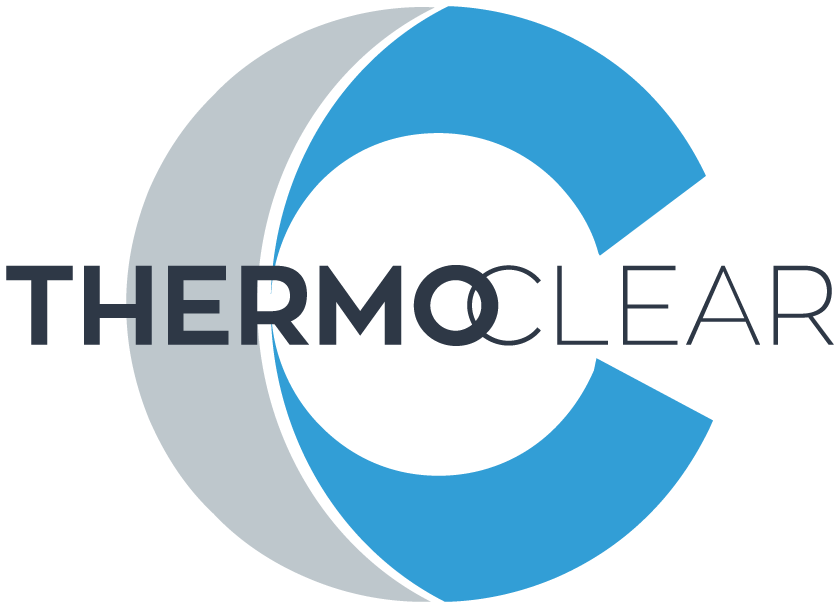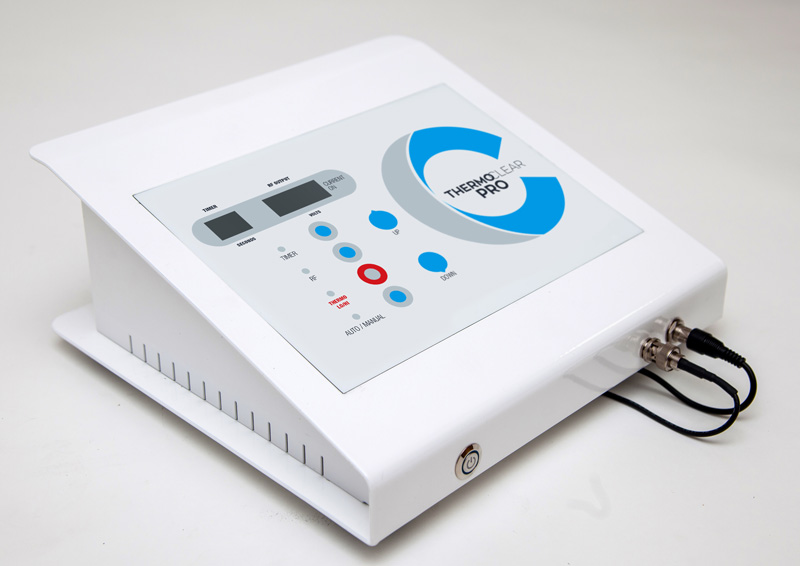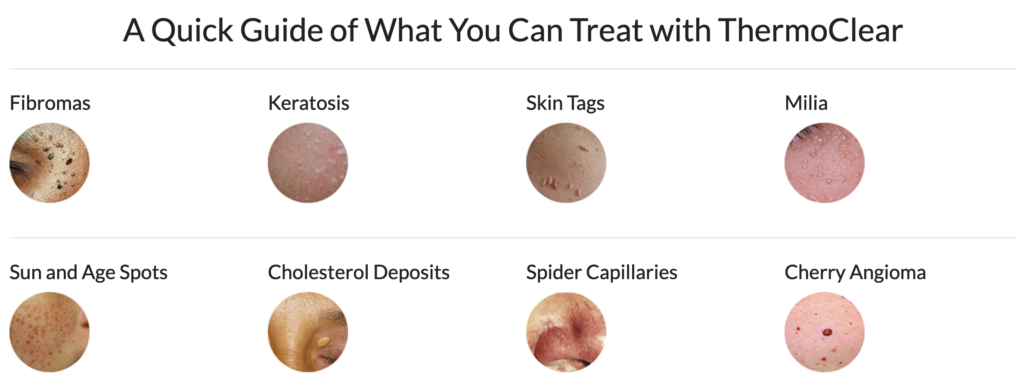
We are thrilled to be able to offer our clients a new and highly effective method of dealing with skin irregularities. If you are interested in improving the appearance of skin imperfections, you may find this skin treatment system to be just what you were looking for!

ThermoCLEAR utilizes a safe, non-invasive technology which treats a variety of skin conditions and can be used on mature, sensitive and all skin types/ethnicities. It has the latest in radio frequency machines technology that utilizes both low and high radio frequency. It can treat ALL skin types on epidermal skin imperfections. These skin imperfections include small Spider Capillaries, Cherry Angiomas, Milia, Acne and Skin Tags. They also include Sebaceous Hyperplasia, Fibromas, Cholesterol Deposits and Sunspots / Age Spots.
ThermoCLEAR does not necessitate large amounts of additional skin care, the process only causes minimal scabbing and affects only the top layers [epidermis] of the skin. The treatment causes minimal discomfort and is very fast. The energy is only applied to the affected area or lesions.

ThermoCLEAR offers a fast-acting solution to common skin issues. However, as with many skin treatments, there is a post-care period in which recipients need to be cautious and avoid exposing their treated skin to harmful stimuli.
All clients who receive ThermoClear will experience slight discomfort and irritation that can last for a few hours. Crusting and slight scabbing may appear for up to a week after treatment. There are steps you can take to minimize side effects, reduce the chance of infection, and gain optimal results:
Different treatments will take different lengths of time to heal. We may recommend different aftercare products depending on what was being treated.
We generally recommend Caladryl for aftercare use on below skin irregularities. In these cases typically heals over a period of 7-14 days. *
Bacitracin or PolySporin post-care for the following skin irregularities. *
Both Caladryl and Bacitracin or PolySporin. Typically heals over a period of 14-28 days. *
* Varies per individual, each person’s skin and habit is different.
These broken blood vessels can occur all over the body but are most common on the face and legs. Often caused by sun exposure, heavy drinking, or facial bruising, ThermoCLEAR can ease the appearance of these capillaries.
Also called liver spots and solar lentigines, they are flat, tan, brown or black spots. They vary in size and usually appear on the face, hands, shoulders and arms — areas most exposed to the sun.
(also known as Dermatosis Papulosa Nigra)
These dark or skin-colored bumps on the face, neck, and upper torso can worsen with age. While harmless, they can be seen as unsightly by some who would prefer to have them treated.
These common skin growths are red in color and typically caused by either friction or age. They are also known as senile angiomas or Campbell de Morgan spots. They are the most common cutaneous vascular proliferations. They are the dilation of a small group of blood vessels located near the skin’s surface and appear as tiny cherry red papules or macules. The broken blood vessels inside a cherry angioma give them a reddish appearance. They are common skin growths that can develop on most areas of your body, are usually common on people aged 30 and older, and are found in individuals of all races and ethnic backgrounds.
Small white bumps that can appear all over the body. They are often most noticeable when they appear on the skin around the nose and cheek area. The full name for them is milium cysts, though they are also known as oil seeds or milk spots. They can often be mistaken for whiteheads but respond very differently to prodding and attempts at ‘popping’ them. They are not filled with bacteria, but dead skin cells and oil. They share some characteristics in common with sebaceous hyperplasia, but are generally small and white, as opposed to bulbous and yellowish.
Milia are most common in newborns, but can also affect older children and adults. Most often, they are caused when skin cells do not shed to make way for new skin, instead getting caught underneath new skin growth and hardening. These are known as primary Milia. However, variations known as secondary Milia may occur in other situations such as: Prolonged use of steroid medications, or certain cosmetics containing paraffin or petroleum, skin damage from rashes, sun exposure, or other injuries, or responses to autoimmune conditions. Milia are harmless. They do not itch and are not contagious. However, they can be unwanted when noticeable on the face.
Sebaceous glands are attached to hair follicles all over your body. They release sebum onto your skin’s surface. Sebum is a mixture of fats and cell debris that creates a slightly greasy layer on your skin. It helps keep your skin flexible and hydrated. Sebaceous hyperplasia occurs when the sebaceous glands become enlarged with trapped sebum. This creates shiny bumps on the skin, especially the face. The bumps are harmless, but some people like to treat them for cosmetic reasons. Sebaceous hyperplasia causes yellowish or flesh-colored bumps on the skin. These bumps are shiny and usually on the face, especially the forehead and nose. They’re also small, usually between 2 and 4 millimeters wide, and painless.
They are scientifically known as acrochordons, or sometimes fibroepithelial polyps. You may just know them as a nuisance. They are soft, benign, flesh-colored skin growths that appear on the body, sometimes on stalks, and commonly in the region of the eyes, neck, armpits, skin folds around the genitals or buttocks, or under breasts. Almost everyone will get one or more in their lifetime, and obese, middle-aged people are the most prone to them. It has been scientifically observed that they are more common during pregnancy. They are not warts, moles, or liver spots. Nor are they a sign of skin cancer, the overwhelming majority of the time. There are multiple methods that are advertised to get rid of skin tags.
Salons by JC
1260 Old Country Rd
Suite 1
Westbury, NY 11590
Appointment Only
310 E. Shore Road
Suite 101
Great Neck, NY 11023
Are you ready to book an appointment with us? Just have some questions? – Contact us below and we’ll get back to you right away.